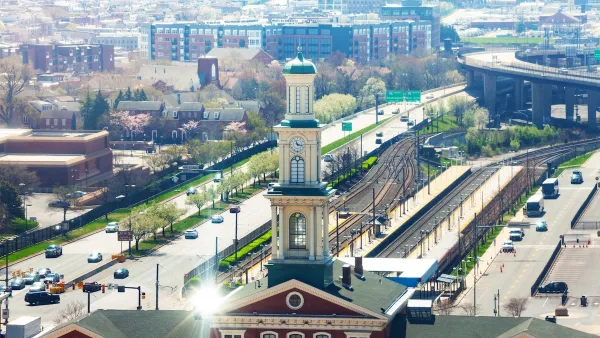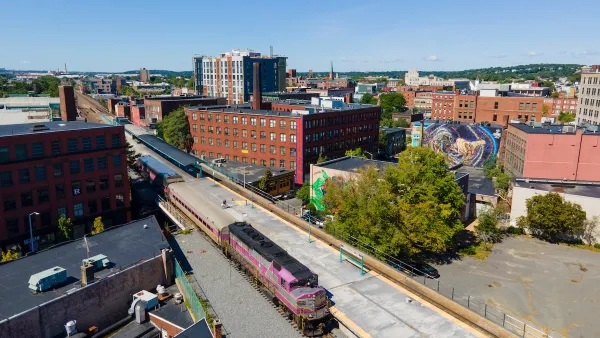Responding to critics of Denver's planned TOD developments, TOD expert John Renne responds to four common misconceptions about transit-oriented development.
"Dr. John L. Renne, an assistant professor of Urban Planning and Transportation Studies at the University of New Orleans, says that despite what some people believe, transit oriented developments can help protect the rural and suburban nature of communities surrounding Denver.
Tenet # 1 - TODs do nothing to curb sprawl
TOD is not the silver bullet, but its part of the solution. Let me give you an analogy. A person that weighs 300 lbs. and is on the verge of a heart attack cannot solve their problems with just taking a few magic pills. They must change their lifestyle by exercising, a change in diet, and possible some medicine. Our cities are unhealthy. Transit and TOD are an important part of the solution, but they are not a panacea.
...
Tenet # 3 - Nonpolluting electric and hydrogen-powered vehicles will make TOD unnecessary in the future.
Even if cars could run on air with no negative by-products, TODs are still needed because of traffic...Also, what are you going to do when you get to the age that you can no longer drive? Many studies show that the isolation of seniors in car-dependent neighborhoods is a big problem and will only worsen in the future. AARP is now promoting TOD as a needed alternative so that seniors can have mobility options as they age. TODs encourage a healthier lifestyle by allowing for residents to get more active transport (ie. walking and biking) in their daily routine. Studies show this to be part of the reason that Europeans live longer and spend less on health care per capita than Americans."
FULL STORY: Professor addresses TOD myths

Maui's Vacation Rental Debate Turns Ugly
Verbal attacks, misinformation campaigns and fistfights plague a high-stakes debate to convert thousands of vacation rentals into long-term housing.

Planetizen Federal Action Tracker
A weekly monitor of how Trump’s orders and actions are impacting planners and planning in America.

Chicago’s Ghost Rails
Just beneath the surface of the modern city lie the remnants of its expansive early 20th-century streetcar system.

Bend, Oregon Zoning Reforms Prioritize Small-Scale Housing
The city altered its zoning code to allow multi-family housing and eliminated parking mandates citywide.

Amtrak Cutting Jobs, Funding to High-Speed Rail
The agency plans to cut 10 percent of its workforce and has confirmed it will not fund new high-speed rail projects.

LA Denies Basic Services to Unhoused Residents
The city has repeatedly failed to respond to requests for trash pickup at encampment sites, and eliminated a program that provided mobile showers and toilets.
Urban Design for Planners 1: Software Tools
This six-course series explores essential urban design concepts using open source software and equips planners with the tools they need to participate fully in the urban design process.
Planning for Universal Design
Learn the tools for implementing Universal Design in planning regulations.
planning NEXT
Appalachian Highlands Housing Partners
Mpact (founded as Rail~Volution)
City of Camden Redevelopment Agency
City of Astoria
City of Portland
City of Laramie





























